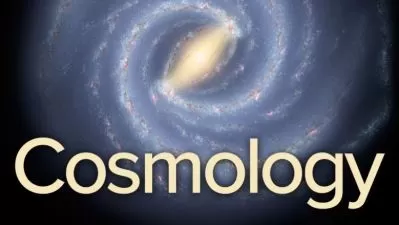A Visual Guide to the Universe with the Smithsonian
David M. Meyer
9:06:21
Description
For the first time in human history, we can see the full splendor and mystery of the universe, thanks to instruments on scores of planetary probes and observatories that have been launched into space since the 1990s.
From Saturn’s rings to the heart of the Milky Way, and from colliding galaxies to cataclysmic gamma-ray bursts at the edges of visible space, some of the most spectacular sights in the cosmos are now as easy to see as the stars above. Many of these cosmic phenomena occur at wavelengths of light that are beyond the range of human vision and can only be detected by special instruments in space.
The dazzling new images are not just a data bonanza for scientists; they have entered popular culture, appearing in art galleries and coffee-table books, as well as on posters, T-shirts, and even postage stamps. Above all, this stunning archive is providing a new perspective on our dynamic universe, including views such as these:
- Solar magnetic storms: The Solar Dynamics Observatory has recorded dramatic time-lapse footage of the sun in ultraviolet light, including a huge explosion of material from the solar atmosphere, with debris smashing back into the sun’s seething outer layer.
- Runaway star: A normal-looking nearby star is in fact racing through space more than 20 times faster than a rifle bullet. The action shows up in an infrared view, which beautifully reveals a shock wave of interstellar gas in front of the star, like the bow wave on a speedboat.
- Galactic crash scene: When viewed in wavelengths beyond human vision, Andromeda, the nearest large galaxy to our own, displays evidence of having been struck 200 million years ago by a dwarf galaxy—just as Andromeda will one day collide with our Milky Way.
- Dark matter revealed: Most of the matter in the universe doesn't emit, absorb, or scatter light at any wavelength. The most convincing proof that this dark matter must exist shows up in combined X-ray and visible light images of distant colliding galaxy clusters.
And that’s only the beginning. Our instruments in space have prospected for water and life on Mars, detected thousands of possible planets orbiting other stars, mapped superheated matter swirling into gigantic black holes, and deciphered the all-pervasive echo of the big bang, which is the key to understanding the large-scale structure of the universe.
The fantastic scientific story behind these remarkable images is yours in A Visual Guide to the Universe, produced in partnership with the Smithsonian—one of the world’s most storied and exceptional educational institutions. These 18 lavishly illustrated lectures that take you from our neighborhood of the solar system to the farthest reaches of space and time. Your guide is Professor David M. Meyer, an award-winning teacher, popular public speaker, and distinguished astronomer at Northwestern University.
Greatest Hits of Astronomy’s Golden Age
Designed for astronomy novices and practiced observers alike, A Visual Guide to the Universe covers a wide range of telling phenomena that have made our era a golden age of astronomical discovery. In selecting the images, Professor Meyer has aimed for variety and scientific significance, while also focusing on key concepts in astronomy, making this course an ideal visual tour through today’s thrilling science of the universe.
As Professor Meyer discusses different images, you learn background ideas such as the electromagnetic spectrum and the Hertzsprung-Russell diagram for charting stellar evolution. You also hear about techniques for finding extrasolar planets in the glare of faraway stars and the breakthroughs that make today’s cutting-edge space probes and observatories possible. Illuminating diagrams and animations help explain what’s going on in each image.
Meet the Explorers
Many people associate space exploration with human spaceflight. But the most productive scientific workhorses of the space age have been robotic instruments such as these:
- Cassini probe: The first spacecraft to orbit Saturn, Cassini has been sending back high-resolution images of the ringed planet and its moons since 2004. Among the findings: The moon Enceladus has towering surface geysers spewing water ice and organic molecules into space.
- Hubble Space Telescope: Capable of resolving objects 10 times smaller than the largest ground-based telescopes, Hubble has been revolutionizing optical astronomy for more than two decades. Its countless images include breathtaking studies of far distant galaxies.
- Spitzer Space Telescope: Details of star birth are often hidden from optical view inside dark clouds of interstellar dust. But the process is crystal clear in infrared, which Spitzer is designed to detect, making it the ideal instrument for observing star and solar system formation.
- Chandra X-Ray Observatory: Extremely energetic processes in the universe produce X-rays, which are very difficult to focus. Chandra does just that, allowing it to image the violent events connected with black holes and other phenomena that heat gas to extreme temperatures.
Among your many adventures, you explore the red planet with the Mars rovers, orbit an asteroid with the Dawn space probe, solve the mystery of gamma-ray bursts with the Compton Gamma Ray Observatory, and take an extraordinary “baby picture” of the early universe with the Wilkinson Microwave Anisotropy Probe. In case after case, you use multiple instruments to view the same object at different wavelengths, learning how each portion of the electromagnetic spectrum contains clues that let you assemble a remarkably complete picture of events happening up to billions of light-years away.
Of course, the true space explorers are the astronomers and other scientists who direct the activities of these far-flung machines. Professor Meyer is one such investigator, having used space telescopes many times in his research. He speaks from experience when he describes the astounding missions—exploits that can be compared to those of Columbus, Magellan, and Lewis and Clark.
With A Visual Guide to the Universe, you have an opportunity to embark on our era’s greatest voyages of discovery, guided by Professor Meyer, the Smithsonian, and The Great Courses. Without leaving home, you’ll find the view is truly out of this world!
More details
User Reviews
Rating
David M. Meyer
Instructor's Courses
The Great Courses
View courses The Great Courses- language english
- Training sessions 18
- duration 9:06:21
- English subtitles has
- Release Date 2023/05/09










